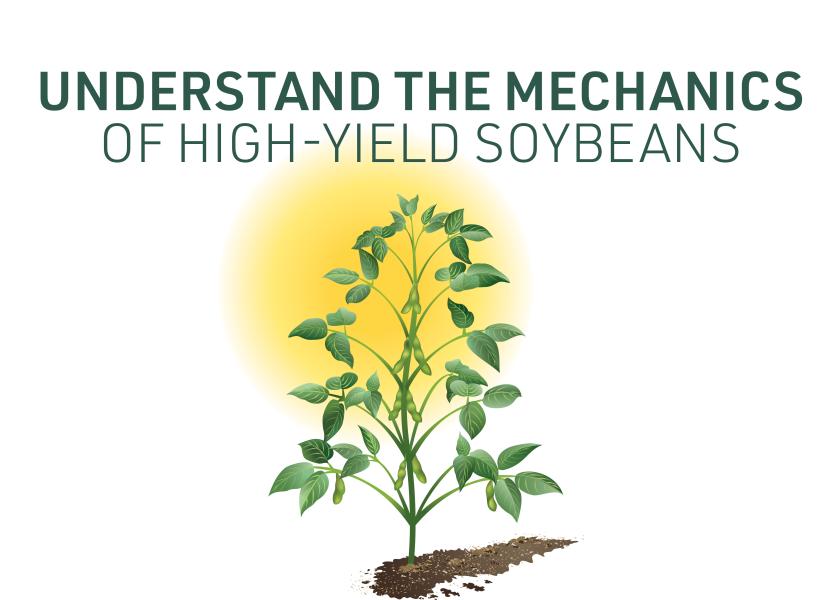Understand the Mechanics of High-Yield Soybeans

As yield monitors tally this year’s work, you’ve probably pondered if the results are at their max. Farm Journal Associate Field Agronomist Missy Bauer says maximizing yields requires a complete understanding of the soybean plant.
What makes yield?
“It’s all about how many pods per plant, the number of seeds in each pod and the size of the seed itself,” Bauer explains. “Our goal is to increase nodes or growing points, pod formation and keep the plant healthy as long as possible to maximize seed size.”
Know your Nodes
“The minute soybeans emerge, their growing point is exposed,” Bauer says, referencing the cotyledons or the first two leaves to emerge from the germinating seed. “From there on, as this plant continues to the unifoliate stage and then on to the first trifoliate, there are growing points, essentially all the way up and down this plant.”
Each node has a growing point, which can branch or form pod clusters. Stacking more nodes closer together is one key to higher yield.
“When we keep these inner nodes shorter, they tend to pod better at that node,” Bauer says. “With earlier planting dates we tend to see inner nodes stacked closer together and we might add two, three or four additional nodes to a plant.”
Branch Out for Yield
Also at each node is the opportunity for the plant to branch. “You’d like to see lower nodes branched out because instead of having maybe three or four pods on a node, you’ve got a branch with even more pods,” Bauer explains.
Some branching potential is dependent on the type or variety of the plant, whether it’s bushy or inline genetics and planting density.
Population Versus Branches
In recent years, planting populations for soybeans have fallen significantly. Bauer says the reason is the pursuit of more branches.
“We’ve seen the ability to branch will overcome any potential loss we would have had if we used higher populations,” she says.
Seed Size Matters
Soybean yields can flex up to 15 bu. just on seed size, Bauer explains.
Moisture during bean development is a big part of seed size. But the use of in-season foliar fungicides can also help extend plant greenness until those rains arrive.
Measure to Manage
Each season, Bauer suggests counting the nodes on the plant, the pods on each node and branching. Also check seed size. These are the key pieces for soybean yield.
To learn more of Missy Bauer’s insights about growing high-yielding soybeans, visit AgWeb.com/soybean-growth







